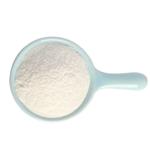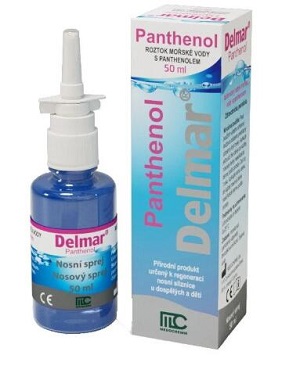Why is Panthenol used in Cosmetics?
Jul 6,2020
What is panthenol?
Panthenol is a chemical substance made from pantothenic acid, also known as vitamin B-5. It occurs organically and can also be produced from both plant and animal sources. It’s used as an additive in various cosmetic products around the globe.
You very likely have pantothenic acid in your system right now, since it occurs in so many common food sources. And you’ve likely used a cosmetic or personal care product with panthenol within the last 24 hours.Panthenol takes the form of either a white powder or a transparent oil at room temperature.
Panthenol is a multi-functional active ingredient that would be useful in most skin care formulations. Its efficacy has been substantiated in numerous peer-reviewed journals. The biologically active form of Panthenol, D-panthenol (EU), is the stable alcohol analogue of vitamin B5, pantothenic acid (EU), and is quickly converted to vitamin B5 (pantothenate) in the body. Pantothenic acid is present in all living cells and acts as an essential nutritional component due to its role in the formation of acetyl-co-enzyme A in the early stages of metabolism.
Benefits of Panthenol
- Regenerates healthy skin maintaining cell stemness
- Improvement symptoms of sensitive skin:
- dryness, roughness, redness, pruritus
- Accelerates wound-healing
- Moisturizes hair, strengthens damaged hair and reduces split ends
- Reinforces the nails
- Improves hydration and maintain skin softness and elasticity
Product Features
- Maintains a healthy skin: right balance between the stem cell renewal and the cell differentiation (p63 upregulated)
- Increases stratum corneum hydration by inducing long-lasting skin moisturization
- Reinforces the skin barrier by reducing transepidermal water loss (TEWL)
- Panthenol is produced with the highest standards in Dalry, Scotland a world-class DSM-owned facility honored with the CEFIC award for sustainable production processes
- Panthenol forms show very good compatibility with all groups of cosmetics ingredients
What’s it used for?
In topical cosmetics, product manufacturers often use panthenol as a moisturizer. But it’s also included in many cosmetics as a softening, soothing, and anti-irritant agent. It also helps your skin build up a barrier against irritation and water loss.
Skin products
Vitamin B-5 is essential for a healthy diet, skin, and hair. It makes sense that panthenol, its derivative, is a staple of many skin care products, such as lotions and cleansers. It’s also found in cosmetics as various as lipstick, foundation, or even mascara. Panthenol also appears in creams made to treat insect bites, poison ivy, and even diaper rash.
The National Center for Biotechnology Information lists panthenol as a skin protectant with anti-inflammatory properties. It can help improve skin’s hydration, elasticity, and smooth appearance. It also soothes:
- red skin
- inflammation
- little cuts or sores like bug bites or shaving irritation
- Panthenol helps with wound healing, as well as other skin irritations like eczema.
Hair products
Hair care products include panthenol because of its ability to improve your hair’s:
- shine
- softness
- strength
- It can also help protect your hair from styling or environmental damage by locking in moisture.
One study found that panthenol may help slow down and hide the look of thinning hair. The study tested it with other active ingredients as a leave-in treatment.
Nail products
Your nails are made from keratin proteins, just like your hair. So, it follows that panthenol can strengthen your finger- and toenails. You might find it in your shine and strengthening nail treatments, or in hand creams and cuticle oils. One study found that applying panthenol to the nail can help hydrate the nail and prevent breakage.
Is panthenol safe?
Both the U.S. Food and Drug Administration (FDA) and the European Commission on Cosmetic Ingredients have approved panthenol for use in cosmetics. The National Institutes of Health (NIH) classifies panthenol as “possibly safe” for general topical applications and nasal sprays. And it’s listed as “likely safe” for topical use by children.
The FDA currently lists panthenol in its widely known “Generally Regarded as Safe” database for when it’s ingested as a food ingredient, or as a supplement. But remember that ingesting panthenol or panothenic acid in food or as a supplement is very different than using it on your skin or hair.
Although it’s widely considered beneficial as a supplement, it’s only classified as “likely safe” for topical use on the skin, hair, and nails. That means there’s no significant evidence that panthenol causes harm, and plenty of anecdotal evidence that it’s helpful for many skin concerns. But there isn’t enough evidence to be sure, so the FDA suggests that more research is needed.
The Cosmetic Ingredient Review (CIR), another reputable organization that protects consumers, assembled a panel of experts in 2017 to assess panthenol’s topical safety in light of recent research.
This review board found no significant evidence that cosmetic products containing panthenol irritate or otherwise harm the skin, except in case of allergy. Bad reactions to topical panthenol are extremely rare. But when side effects do occur, they usually take the form of contact dermatitis or gastrointestinal distress.
Caution: The effects of long-term use of topical panthenol are unknown. Panthenol is known to stimulate the proliferation of dermal fibroblasts. Over the short term, this is beneficial and facilitates skin healing and revitalization. However, excessive cell proliferation over the long run may lead to the so-called cell senescence, a pro-aging, metabolically abnormal state when cells can no longer divide (see our article about cellular senescence and Hayflick limit). Therefore, until continuous, long-term use of panthenol is better researched, it is better to use it only on a short-term basis: e.g. periodically, 2-4 weeks at a time.
References
https://www.dsm.com/personal-care/en_US/products/vitamins/panthenol.html
https://www.drugbank.ca/drugs/DB11204
https://en.wikipedia.org/wiki/Panthenol
https://www.healthline.com/health/panthenol#uses
https://knowledge.ulprospector.com/1763/pcc-panthenol-multifunctional-active/
- Related articles
- Related Qustion
- The application of Dexpanthenol Jul 15, 2022
Dexpanthenol (International Nomenclature of Cosmetic Ingredients (INCI) name panthenol) is the alcohol corresponding to pantothenic acid (the water-soluble vitamin B5).
N-Bromosuccinimide is five-membered cyclic dicarboximide compound having a bromo substituent on the nitrogen atom. N-Bromosuccinimide (NBS) has been extensively used both in the bromination and oxidation of many classes of organic compounds....
Jul 2,2020Organic reagentsHyaluronic acid or hyaluronan, is actually a carbohydrate molecule that naturally occurs in our bodies. To answer the question you are asking yourself, yes, it’s already in our skin!....
Jul 8,2020Biochemical EngineeringPanthenol
16485-10-2You may like
- The toxicity of Triethylene glycol
May 14, 2024
- Is 1,4-benzoquinone a toxicity compound?
May 11, 2024
- The Synthesis method and Toxicity of 18-Crown-6
May 10, 2024
- Panthenol
-

- $0.00 / 1kg
- 2024-05-23
- CAS:16485-10-2
- Min. Order: 1kg
- Purity: 0.99
- Supply Ability: 500000kg
- Panthenol
-

- $6.00 / 1kg
- 2024-05-11
- CAS:16485-10-2
- Min. Order: 1kg
- Purity: More than 99%
- Supply Ability: 2000KG/Month
- Dl-Panthenol
-

- $18.00 / 10kg
- 2024-05-08
- CAS:16485-10-2
- Min. Order: 1kg
- Purity: 99.9
- Supply Ability: 5000





